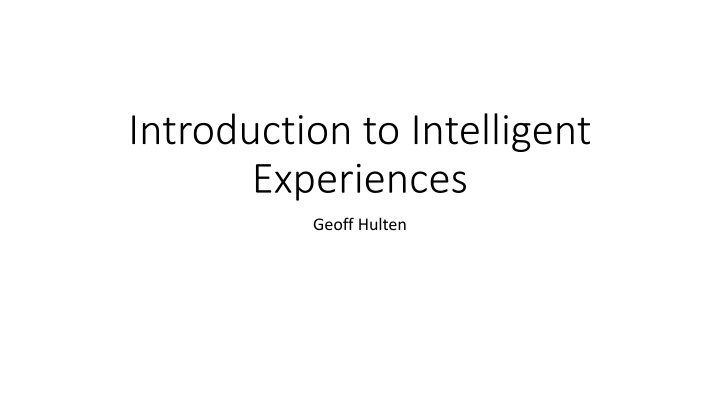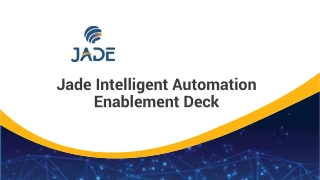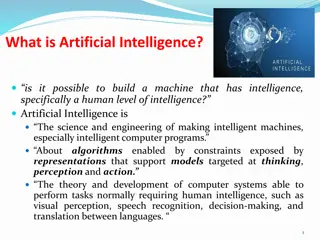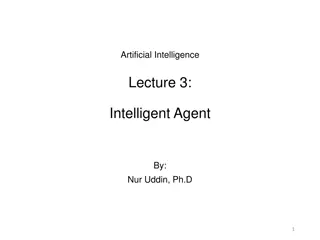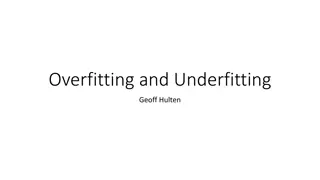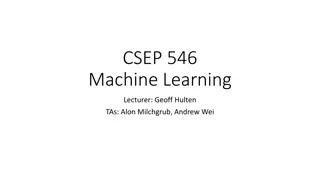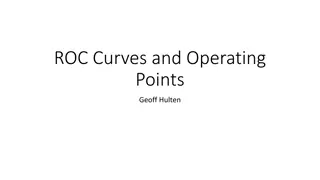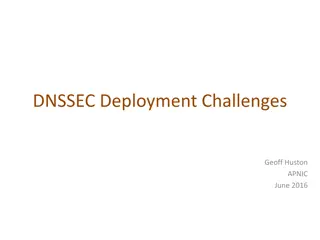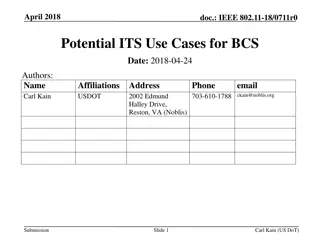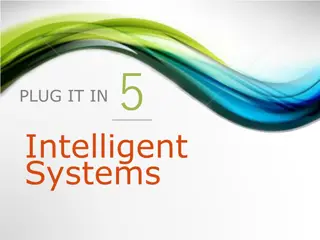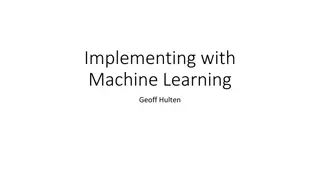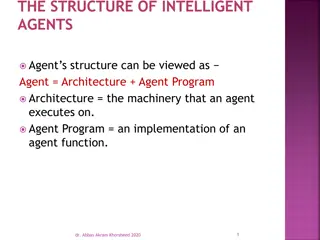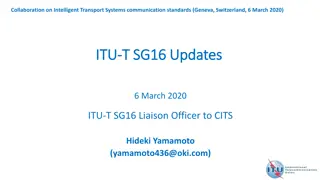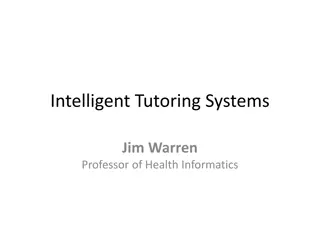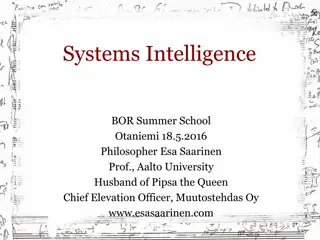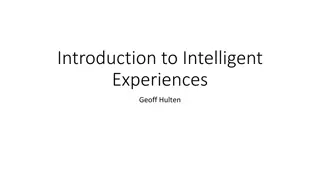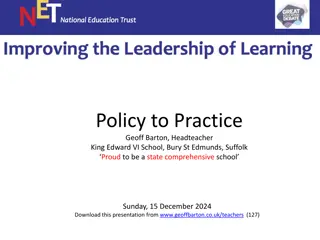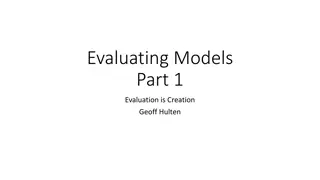Introduction to Intelligent Experiences by Geoff Hulten
An overview of intelligent experiences, their challenges, the impact of mistakes, and the goals of achieving user trust through effective interactive systems. The complexities of developing intelligent systems, managing mistakes, and enhancing user experiences are explored, showcasing the evolution and challenges in creating meaningful interactions between users and intelligent technology.
Download Presentation

Please find below an Image/Link to download the presentation.
The content on the website is provided AS IS for your information and personal use only. It may not be sold, licensed, or shared on other websites without obtaining consent from the author.If you encounter any issues during the download, it is possible that the publisher has removed the file from their server.
You are allowed to download the files provided on this website for personal or commercial use, subject to the condition that they are used lawfully. All files are the property of their respective owners.
The content on the website is provided AS IS for your information and personal use only. It may not be sold, licensed, or shared on other websites without obtaining consent from the author.
E N D
Presentation Transcript
Introduction to Intelligent Experiences Geoff Hulten
What is an Intelligent Experience Hello User! Drive the UX P(LikeSong | User, History) P(LikeSong): 32.612% Raw Prediction Modes of Intelligent Interaction: Choose a Song Choose a Song Playing a Song Should I Play a Song? Yes No Organize Annotate Automate Prompt Which to use?
Why Intelligent Experiences are hard pt 1: There will be Many Mistakes Mistakes 97% Accuracy very, very good Experience with Mistakes At what point do the mistakes ruin the utility? 100,000 users with 3 interactions per day: 9,000 mistakes per day 63,000 mistakes per week 3.2 million mistakes per year Consider each experience two ways: What to do if the user got there because the model was right What to do if the user got there because the model was wrong Each user expects: 1 mistake per ~11 days ~30-35 mistakes per year
Why Intelligent Experiences are hard pt 2: The Mistakes Will Change Intelligence Changes You have a better model +2%! More things got better than worse But some things got worse Problem Changes New contexts appear Model tends to be worse at new things Latency in catching up? New mistakes Randomly distributed? Focused on certain users? Cheap or costly? Old contexts disappear Things users liked yesterday gone today Meaning of a context change Enough users perceive it differently But not all users Change can feel like a mistake even when it is for the good
Why Intelligent Experiences are hard pt 3: The Uncanny Valley Familiarity Human Factors Tool or Relationship? 0% Human Likeness 100% Same Input different output ML mistakes not like human mistakes Humans get fatigued Intelligence can be creepy
Goals of Intelligent Experience Will cover in later lectures Achieve Objectives Mitigate Mistakes Get Data to Improve Deliver expected user outcomes based on product promise Manage the number and types of mistakes the user sees Verify the system is working as intended Engage users to earn trust & achieve positive change Control how easy it is for users to identify mistakes Verify model quality meets and maintains expectations Drive organizational objectives / leading indicators Give users options for recovering from mistakes Get training data from user interactions
Achieve Objectives A single model can achieve different outcomes based on how it s presented to users Achieve Objectives Match value of success with demands placed on user Deliver expected user outcomes based on product promise Engage users to earn trust & achieve positive change Manage long term fatigue of interaction Drive organizational objectives / leading indicators Manage long term perception of value
Example: Home Light Automation Model: P(on | lux, motion, etc) Tuned Operating Points Full Automation Objective: Save Power Objective: Objective: Keep Users Safe Extra Conservative Blink Warning Light Initiate Voice Interaction 1 1 1 if P(on) < off_threshold: ToggleLightOff() if P(on) < prompt_threshold: PromptLightOff() if P(on) < warn_threshold: WarnLightOff() if P(on) > on_threshold: ToggleLightOn() if P(on) < off_threshold: ToggleLightOff() if P(on) < off_threshold: if(timer) > 5_minutes: ToggleLightOff() else: timer.reset() if P(on) > aggressive_on_threshold: ToggleLightOn() P(on) P(on) P(on) 0 0 0 Full Automation Save Power Safety 100% P(On) 50% 0% 0 5 10 15 20 25 Minute
Mitigate Mistakes Number of interactions X model quality ~ number of mistakes Mitigate Mistakes Manage the number and types of mistakes the user sees Different types of mistakes have different costs Control how easy it is for users to identify mistakes Users can t recover from a mistake they don t notice Give users options for recovering from mistakes You can make it cheap or expensive to recover from model mistakes
Example: Home Light Automation Mistake: Turn On (Automate) Cost: - User Present: Frustration - User Absent: Power Notice: - User Present: Easy - User Absent: No Mitigate: - User Present: Switch Light - User Absent: No Model: P(on | lux, motion, etc) Objective: Full Automation 1 P(on) Frequency: Evaluate every second: - FP Rate 1%: 864 / day Mistake: Blink Warning Light (Annotate) Cost: - User Present: Very low - User Absent: None (Opportunity?) Notice: - User Present: Difficult - User Absent: No Mitigate: - User Present: Ignore - User Absent: No 0 Objective: Save Power Evaluate every 30 mins: - FP Rate 10%: 1.2 / day 1 Evaluate on entry detection: - FP Rate 5%: 1/20 entries P(on) Mistake: Initiate Voice Interaction (Prompt) Cost: - User Present: Moderate interruption - User Absent: None (?) Notice: - User Present: Easy - User Absent: No Mitigate: - User Present: Wave arms like crazy person - User Absent: No 0
Balancing an Intelligent Experience Forcefulness If the intelligence is poor E.g. when the system is new Frequency If the cost of a mistake is high E.g. a surgical robot Value of Success If there is legacy UX E.g. integrating into an existing application Cost of Failure Quality of the Intelligence
Forcefulness An experience is forceful if: It is hard for the user to miss It is hard for the user to ignore It takes work for the user to stop Forceful experience useful when Model quality is high Value of success >> cost of failure Training data is valuable An experience is passive if: It is easy for users to miss It is easy for the user to ignore It takes explicit work to accept Passive experience useful when The interaction is frequent Value of success << what user is doing Passive Forceful Choose a Song Choose a Song Playing a Song Should I Play a Song? Yes No Organize Annotate Automate Prompt
A Balancing Example: Spam Filtering Delete 1 0.9 0.8 0.7 Intelligence Quality 0.6 Suppress 0.5 0.4 0.3 0.2 Inform 0.1 0 0 0.1 0.2 0.3 0.4 0.5 0.6 0.7 0.8 0.9 1 Experience Forcefulness
Frequency of Interaction How often is the model called, and how do the predictions get used Frequent interactions tend to fatigue users (especially forceful ones) Get desensitized and start ignoring the intelligent experience Get irritated and turn off the intelligent feature Infrequent interactions have fewer opportunities to create value
Approaches to Frequency Now Playing Now Playing Now Playing Now Playing >> Whenever Prediction Changes For Significant Changes Interaction Budget Model User Every second: Call Model Update UX Update if: different and ? > ? different for N seconds No more than: N per session N per minute When P(accept) > X%: Useful when: Realtime control Extreme change High-quality model Useful when: Reducing jitter Reducing fatigue Latency is acceptable Useful when: Testing interactions Reducing fatigue Gathering Data Useful when: Users express interest Low / High mode Worth the complexity Backstop: Provide user a way to initiate interaction
Value of Success Interaction Valuable to User if Noticed that it happened Interaction Valuable to You if Increases engagement Cares that it happened Improves sentiment Connects outcome to intelligence Causes user to give you money Feels it was in their interest Creates good training data Thinks the system is cool
Example of Balancing: Break Finder Value Costs Model Quality Forcefulness Frequency Doctor becomes too reliant High Precision Threshold Less time per scan Poor Annotate Doctor starts ignoring it Great training data Patient untreated High Recall Threshold Good Prompt Triage out obvious scans Patient overtreated Summary of Last Week: - Treated 47 breaks - Wasted 782 x-rays Every Interaction Fewer overall mistakes Better than Human Hospital Sued OK Automate
Summary Goals of Intelligent Experience Present predictions to the user Balancing Intelligent Experiences Forcefulness Achieve User & System objectives Frequency Minimize intelligence flaws Value of Success Create data to grow the system Cost of Failure Hard Because of: Mistakes Change Human Factors Quality of the Intelligence Change can feel like a mistake even when it is for the good
